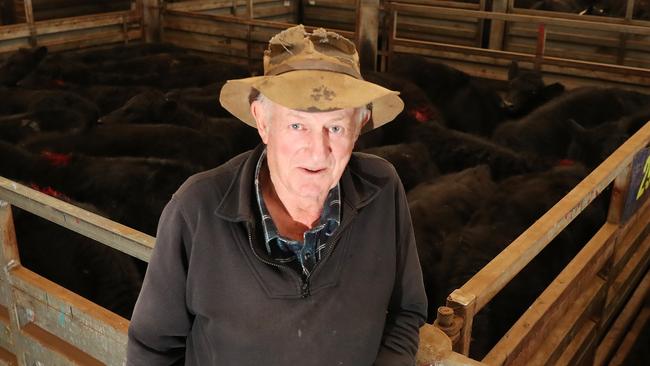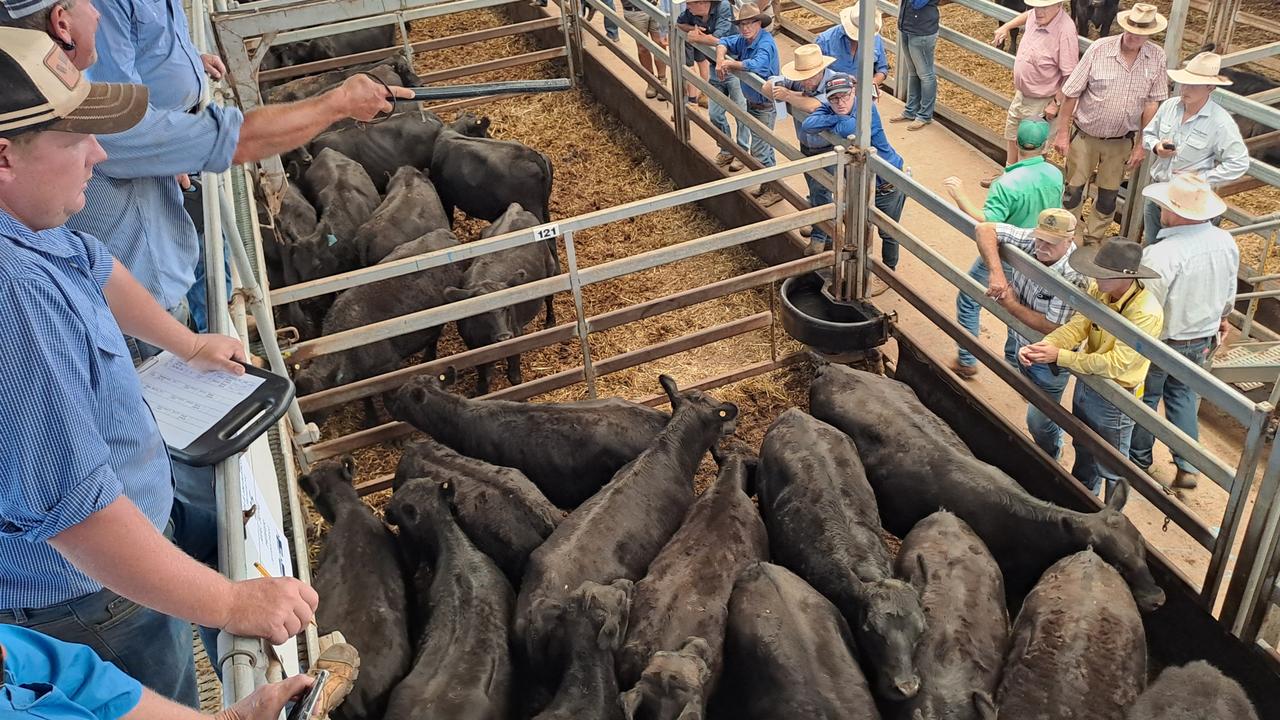Hammer falls at Pakenham’s final cattle sale
It was the final hurrah for Pakenham yards and buyers made sure it went out with a bang as prices lifted up to 25c/kg. Read the details here.

Pakenham’s final store sale went off with a bang as 3500 cattle sold up to 25c/kg dearer on Thursday.
A big crowd, buoyed by the fact it was the last sale at the centre, saw strong competition for feeder steers as the recent trend to put numbers of heavier cattle on grain continued.
Alex Scott and Co Pakenham livestock manager David Setches said the sale’s highlight was watching the competition for feeder orders with bidding coming from JBS Australia, Thomas Foods International, Charlton Feedlot, Princess Royal and Midfield.
These buyers, he said, were keen to secure steers more than 400kg liveweight, and those hitting the sweet spot were rewarded.
Mr Setches said steers more than 400kg liveweight and especially those over 450kg and up to 530kg sold from 390-425c/kg.
“The prices were very good for the best Angus steers,” Mr Setches said.
“The feedlotters are trying to secure those heavier cattle, and put them on feed for up to 150 days, so they are wanting those with weight.”
For steers below 400kg, the prices dropped away but were still higher than two weeks earlier, Mr Setches said.
Steers weighing 300-350kg liveweight sold from 360-390c/kg to be 20c/kg that the previous sale at the centre.
“The strength of the feeder market is dragging up the price of the lighter steers,” Mr Setches said.

“When they are getting $2100 or $2220 for a feeder steer, it allows restockers to come back into the market at $1100-$1200 and still bank on that $1000 profit margin.”
When it came to the lightest end of the market, little steers weighing 200-250kg liveweight, buyers changed their thinking and operated on a dollar a head basis, prepared to spend $800-$900. This pushed cents a kilogram rates for the lighter end above 400c/kg in places.
“Some people would rather have a lower outlay, and can buy these little steers at $800 or $900 and put some weight on and sell for $1400 or $1500 pretty easily if they have feed,” he said.
The heifer market was not as strong, though the biggest heifers weighing over 400kg liveweight did break through the 300c/kg mark, returning 300-330c/kg liveweight.
Away from this, Mr Setches described the lighter heifer rates as “sticky.
Heifers at a joinable weight made 270-300c/kg, he said, but light heifer prices were “hit and miss”.
The best cows and calves made more than $2000, and looked good value given their split value, but again he said this market had been sticky compared to demand for steers.
Mr Setches said the region had survived winter well and thought prices had held up.
“We are having a great season in southern Gippsland as its not too wet, and we are nearly out of winter,” he said.
“Prices are improving week on week, and that’s great to see.”
In attendance was 83-year-old Graham Bowman, the very first person to buy an animal at Pakenham, who said he has seen a notable shift to increasing numbers of Angus cattle being yarded, with breeders moving away from Herefords.

“I bought the first for probably about three to four grand, I think it was for charity,” he said.
“(Then) at the first market I was buying for O’Connors abattoirs in Pakenham, I couldn’t say how many I bought on the day because that’s a long time ago! Maybe a few hundred.”
The closure of Pakenham means there is now no saleyard within 100km of Melbourne CBD, with the next closest yards in Leongatha or Yea.
Alex Scott agent Ron Girling has been working for 40 years, and said he expects freight costs to double for producers around Pakenham.
“I do load as well and I charge $30 a head to bring them to Pakenham, doing four loads a day. Now it will be $60-$70 a head to Koonwarra, and I’ll only be able to do two loads,” Mr Girling said.
“It’s not fair to the producer, they get stuck every time.”
Leigh Allen from Flinders had been coming to Pakenham for 27 years, selling at Dandenong and Newmarket before that, and will now shift his Angus cattle to Ballarat.
He expects the difference to cost $10-15 a head, and will stay with his agent of 20 years in the move to Ballarat, rather than a closer yard.
“We’re going to have to send a truckload at a time, and it will cost a little bit more but that’s life,” he said.










